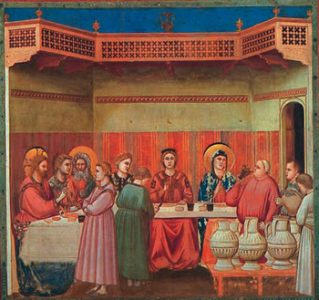Mary for Today – Mary and Culture (4)
Mary and Latin
In 1974 Pope Paul VI published his Apostolic Exhortation, Marialis Cultus: Devotion to the Blessed Virgin Mary. Along with this, the National Conference of American Bishops affirmed “the permanent importance of authentic devotion to the Blessed Virgin” (#99. Behold Your Mother: Woman of Faith). Both documents were prompted by the diminishing of popular devotion to the Blessed Virgin that followed the liturgical reforms of the Second Vatican Council.
One explanation for this decline in enthusiasm for popular devotions was the introduction of the local language into the liturgy. Prior to Vatican II when Latin was the only language used in the liturgy, popular devotions in many countries were an outlet for legitimate expressions of piety peculiar to particular cultures in their various national languages. The introduction of these various national languages in the liturgy lessened the need for other devotions in the vernacular.
Other Factors
Of course there were other sociological and anthropological factors involved. One was that the level of secular and religious education among the laity had increased dramatically. The need for education of the laity was addressed by St John Paul II as one of the greatest needs of the Church. Devotions of significance, for European immigrants to many countries, would gradually lose their significance for successive generations of their children. The contemporary challenge is to contribute to the development of ‘authentic’ Marian devotion as urged by the two documents mentioned, to incarnate the church and a devotion that is ‘of permanent importance’ in a world that is distinctively new.
To incarnate European-inspired devotion to Mary, the Mediterranean maiden, in distinctively new countries, is a cross-cultural task of mammoth proportions, for it involves the challenge to understand two, and in our own country more than two, contrasting cultures: that of the Mediterranean world and that of our own shores. Marian devotion will have to be both faithful to its Mediterranean roots and relevant to its new cultural context. In exploring this topic we will look at three areas: Mary, the Mediterranean maiden; Marian Devotion for believers; and Marian Devotion and Spirituality.
Mary the Mediterranean Maiden
Our Biblical ancestors, including Mary, lived in a Mediterranean world whose culture shaped their total life experience, including their experience of God. We live in a totally different world and culture which also shapes our life experience including our experience of God. Five primary value orientations guided all Mediterranean persons including Mary.
A] Being
Being describes an orientation towards human activity marked by spontaneity in response to life experiences. This is the exact opposite to the take-charge outlook. It is manifest in Mary’s response to the message of the angel: “Behold I am the handmaid of the Lord; let it be done to me according to your word.” Mary yields willingly to accept life, as is very normal for Mediterranean people.
At Cana where Mary invites Jesus to intervene in a moment of need, then gives instructions to the servants, and apparently ‘takes charge’ of the situation, her behaviour rather indicates that she and Jesus are somehow related to this couple and family. It would be very shameful for a non-relative to interfere in the affairs of a non-related family. Even here Mary responds spontaneously as a female relative is expected to respond: with a concern for the honour of the family lest it be shamed by a sudden shortage of wine at a celebration.
B] Group focus
Rather than focus on individual persons, expects individuals always to subordinate personal wishes and desires to the group. While listening to Jesus teach, the crowd notes the approach of visitors and advises Jesus: “Your mother and brothers wish to see you.” They fully expect Jesus to halt his personal teaching agenda and to defer to his family, his ‘main’ group, even above the needs of the crowd, also an important group for Jesus. His mother and brothers expect that too. Imagine the shock of Jesus’ reply. He appears to have gone right on teaching and ignoring his family’s request.
Two cultural aspects should be noted. The behaviour of all Mediterranean family members is expected to contribute to, rather than detract from, family honour. On the other hand, the rude outburst of an adolescent son towards his mother (see the Child Lost in the Temple), which demonstrates his growing manliness, is supposed to disappear in adulthood and be replaced by a less strained relationship. Notice that Mary comes with a group, just as she stands at the foot of the cross with another group, the women and the Beloved Disciple. Just before he dies, Jesus makes sure that Mary will not be left alone, but will have some adult male to look after her as the culture requires.
While the annunciation is a personal experience for Mary and is presumed to have taken place in a home, recall that the home is the domain of all the women. Women and children of the extended family are all in and around the home. It is rare, and open to the suspicion of shameful behaviour in the Middle East, if a woman ever appears anywhere alone, rather than in the company of other women and children of the extended family.
Source:
Pilch, John J., Mediterranean Devotion and Wellness Spirituality: Bridging Cultures. BTB



 Entries(RSS)
Entries(RSS)